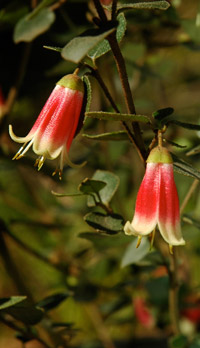AUTUMN FLOWERS IN THE GARDENS
Although the days are shorter and the weather a bit cooler, autumn in the Gardens can be as brilliant as spring or summer with fantastic flower and foliage colour. Enjoy the colours and textures as you discover the beauty and diversity of Australia's plants.
Here we feature some flowers you can see this autumn in the Gardens that may also inspire you to add colour to your Garden at home.
These plants are available in select nurseries and from Australian Native Plants Society Canberra Region sales at the Gardens in spring and autumn.
Information provided by Ros Walcott.
Correa alba or White Correa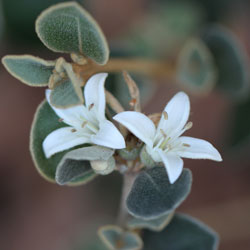
Correa alba is a neat medium sized bush with grey-green leaves with silver backs and white star flowers.
It is native to eastern coastal regions of Australia from northern NSW to Tasmania and eastern South Australia.
SEE Correa alba IN FLOWER IN THE GARDENS this autumn in Section 212 near the Visitor Centre or Section 131, the Ellis Rowan Garden.
GROW IT AT HOME Correa alba is a popular and reliable plant in the garden. It is very hardy and can grow in full sun or part shade in well drained soils. It is frost and drought tolerant once it is established, and depending on climate, can flower throughout the year.
Other plants like this are usually cultivars of Correa alba such as Correa ‘Ivory Bells’, Correa ‘Western Pink Star’ or Correa ‘Flat White’.
Image: Ben Walcott
Alyogyne 'West Coast Gem'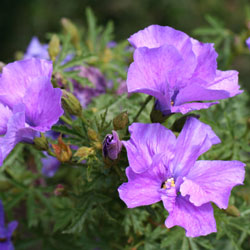
Alyogyne ‘West Coast Gem’ is popular in cultivation for its profusion of clear purple ‘hibiscus’ style flowers which open for a short period only but are prolific. The bush is medium to large sized with coarse foliage.
SEE ALOGYNE ‘WEST COAST GEM’ IN FLOWER IN THE GARDENS this autumn in section 131 and section 174.
GROW IT AT HOME Alyogyne ‘West Coast Gem’ works well as an informal hedge or in shrubberies. It is also suitable for container planting. It tolerates a wide range of soil types and conditions, however grows best in a sunny, open position in moist, well-drained soil. It will tolerate dry conditions when established.
There are other Alyogynes which are somewhat smaller which have the same generosity of flower, Alyogyne ‘Karana’ or Alyogyne ‘Blue Heeler’.
Image: Ben Walcott
Epacris longiflora or Native Fuchsia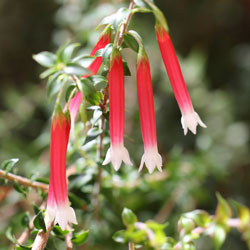
Epacris longiflora has thin tubular red flowers with white tips on a small prickly bush. Being 1–1.5 m tall, this plant forms a shrub with stiff branches. It belongs to the heath family whose native range extends from the central coast of New South Wales to southern Queensland.
SEE EPACRIS LONGIFLORA IN FLOWER IN THE GARDENS this autumn in the Ellis Rowan Garden, section 131 and along the top section of the Northern carpark, section 174.
GROW IT AT HOME Epacris impressa is a widely cultivated species. This plant needs moisture and grows on well-drained soils, for instance, in sandy or gravelly pots, raised beds or sloped areas. It prefers a slightly acidic soil and can be planted in full sun and semi-shade. The flowering time lasts from late autumn to late spring with a peak in winter. This long flowering time is one of the reasons why this plant is often sought after in gardens. A sequence of plantings is recommended to retain this short-lived plant in the garden.
Another plant like this is Epacris impressa or Common Heath which is the floral emblem of Victoria.
Image:
Acacia subulata or Awl Leaf Wattle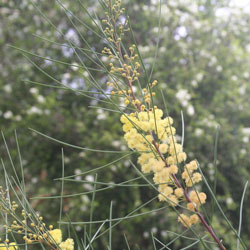
Acacia subulata has fine foliage and scented yellow balls of flower for long periods of time. Flowers open sequentially towards the tip.
SEE ACACIA SUBULATUS IN FLOWER IN THE GARDENS this autumn in the Acacia section, section 18, just below the Eucalypt Lawn.
GROW IT AT HOME This is a small wattle which can be underplanted in the garden. It is a hardy evergreen shrub, that can withstand dry soil for extended periods through to constantly moist mildly acidic to mildly alkaline soil.
Other wattles like this one with light ferny foliage are Acacia cardiophylla, Acacia spectabilis and Acacia boormanii.
Image: APII
![Director of National Parks [logo]](../../images/dnp_90px.gif)





